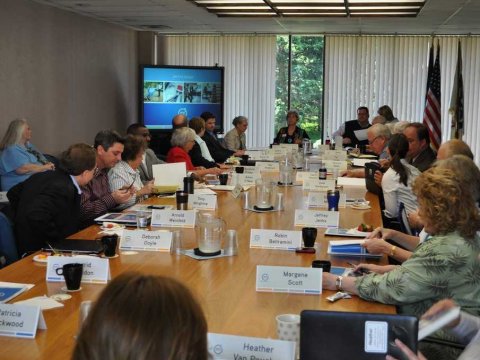#Leadership : How To Take Criticism Like A Hero…Do we Make anything Better When we Shut Down other People Who are Trying to Give Us that Unsolicited Help? No.
There is a certain kind of persecution that’s all in your head, but which makes you flee from your own life. You may have changed jobs, changed careers, changed your state of residence or changed your marital status in a vain attempt to flee from this imaginary persecution.
That persecution comes in the form of advice from other people—a colleague, a boss, a friend, or a family member. I suggested in a recent article that, if we can stop feeling triggered by such “nagging” and instead receive it with patience and gratitude, our lives can be transformed. It raised some eyebrows, and I think it needs some elaboration.
Begin with the idea that most people think the greatest gift they can give you is their hard-earned insight and experience. So when they seem to be nagging, they’re probably just trying to do some combination of well-meaning things:
- Sincerely trying to help you, or to keep you from possible disaster, which they stay up at night worrying about
- Trying to make sense of their own situations, using your situation as a touchstone
- Trying to connect more deeply with you
- All of the above.
But because you and I tend to be so defensive, so unwilling to consider that we may be wrong, in response to their kindness we typically accuse them of being:
- mean
- clueless
- controlling
- all of the above
While we might feel controlled by the nagger, they’re not controlling us at all. We’re just reeling from our own sense of helpless frustration, because we feel powerless to please this human being in front of us (whose approval may mean a lot to us).
Like this Article ? Share It ! You now can easily enjoy/follow/share Today our Award Winning Articles/Blogs with Now Over 800K+ Growing Participates Worldwide in our various Social Media formats below:
FSC LinkedIn Network: (Over 10K+ Members & Growing !) www.linkedin.com/in/frankfsc/en
Facebook: http://www.facebook.com/pages/First-Sun-Consulting-LLC-Outplacement-Services/213542315355343?sk=wall
- Google+: https://plus.google.com/115673713231115398101/posts?hl=en
- Twitter: Follow us @ firstsunllc
educate/collaborate/network….Look forward to your Participation !
Continue of article:
My late father was an endless fountain of advice. He would tell me that I could gain astonishing wisdom from his own years of experience, which could fix all the issues in my life.
One day, after I swatted away another one of his many suggestions, he sulked and said, “You know, I have been on this earth a lot longer than you. I have learned some things that could be helpful to you.”
“Thanks, Dad,” I said. “But ya know, I’ve got a lunch meeting tomorrow with someone evenolder than you. So I’ll be sure to get the straight scoop from him.”
I enjoyed my smart-ass retort. But it would be years after he passed away that I realized that I’d responded with weakness, not strength. With poverty of spirit, not generosity.
A Spirit of Charity
Let’s try to look at it from a different point of view. The late priest and author and Henri Nouwen spent decades serving the poor and the handicapped. But he never did so out of a feeling that they had “less” than he did.
He said he served them because he wanted them to see how rich they truly were, and how they had gifts to give him and to the world—joy, peace, unique talents, humor, a generous spirit, and so on. Nouwen’s basic point was that we make people richer by allowing them to know that they have something to give us.
In short, to receive is often a greater act of charity than to give. (This is why, when you run into someone from a traditional culture who insists on feeding you, your desire not to impose on them is genuinely making them feel like you don’t care for them.)
Refusing the Gift
I once visited my niece, Natalie, at her father’s office when she was two. She toddled around the office, holding a small plastic bowl of Cheerios. Once in a while she’d accidentally spill them on the floor, then would pick them up and try to feed them to me. You better believe I ate every one of them, germs be damned. There was no way I was going to refuse that act of kindness from my little niece, right there in front of her. I chomped down those dirty Cheerios gladly.
The challenge, of course, is to bring that same spirit of charity when receiving advice and criticism from others. Perhaps they have a genuine point to make. Or perhaps, like my toddler niece, they’re in their innocence handing us the dirty Cheerios of their own experiences, hoping only that we’ll receive with them in the spirit intended.
Do we make anything better when we shut down other people who are trying to give us that unsolicited help? No, we’re essentially telling them that their wisdom and their concern are nuisances that are wrecking the cosmic order. We “prove” their poverty. By contrast, if we accept their advice with gratitude and patience, we make them (and ourselves) richer in spirit and character.
And we find ourselves spending a lot less time changing our jobs, careers, homes, partners, spouses and situations in an attempt to escape others’ well-meaning criticisms.
Rob Asghar is the author of Leadership Is Hell: How to Manage Well and Escape with Your Soul, available at Amazon.
Forbes.com | January 4, 2015 | Rob Asghar


